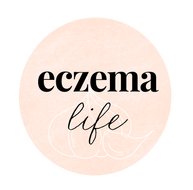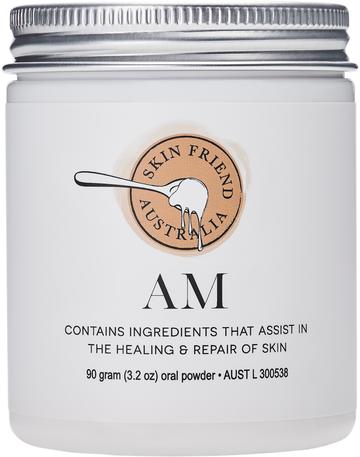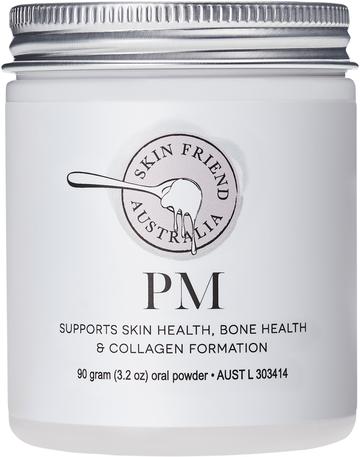What is Candida and how is it treated on the Eczema Diet?

Candida albicans is one of the many different yeasts that belong to the candida family.
It typically exist in the intestinal tract and is usually a harmless yeast as candida is normally 'policed' (or kept in balance) by other 'good' bacteria. However due to factors such as poor diet, antibiotic use, stress or an impaired immune system, an overgrowth of candida can develop.
This is often referred to as 'Candidiasis' or 'candida infestation'. It is always best to test to ensure you do have a diagnosed Candida infection as many intestinal problems can mimic each other, so visit your doctor for testing.
Symptoms of Candida infestation
Candidiasis can adversely affect the intestinal tract and other sites of the body. Symptoms that are associated with a Candida infection include:
- red or white patches on the skin or inside the mouth which cause itching or irritation, and improve after anti-fungal treatment (ref.)
- infections of vagina (ref.)
- sensitivity to mould
- weakened immune system
- dandruff and scalp problems
- chemical sensitivity
- digestive disturbances
- sensitivity to sugar (sugar feeds candida and can worsen symptoms)
You can do the complete Candida questionnaire on page 24 and 25 of the ‘Eczema Diet Book’.
Will fixing Candida heal your eczema?
Not necessarily, as eczema can be caused by other factors at the same time, but if you have candida it will certainly worsen your eczema, so you should treat it before or during your eczema program.
You may find yourself confused about how to treat Candida on an eczema friendly diet as many of the herbs and supplements that are recommended for candida are also high in itch-promoting salicylates (so they may worsen your eczema!). This can typically result in eczema sufferers experiencing a flare when trying to implement a standard candida protocol.
This does not have to be the case as there are effective ways to treat eczema without causing a flare up, so let's look at how we can improve both these conditions whilst also avoiding high salicylate ingredients.
An eczema friendly candida diet
I recommend to my patients who have eczema and Candidiasis to follow the Eczema detox or Eczema Diet and avoid all forms of sugar to starve the yeast. This version would focus on including animal and vegetarian protein with each meal, plenty of eczema-friendly vegetables and including generous amounts of garlic, leeks and shallots with your meals.
Moderate amounts of good quality carbohydrates such as spelt; quinoa and buckwheat are favoured over white rice and other white flour products and exclusion of sweeteners such as maple syrup, brown rice syrup and sugar. Small amounts of fruit may be tolerable depending on the severity of your symptoms.
If you find you can tolerate small amount of fruit, papaya is recommended on the Eczema Detox and diet programs and has shown to have anti-fungal effects against Candida. (Ref)
It is also important to have regular bowel movements, especially when treating Candidiasis, so toxins are being efficiently removed from the body. Ensure your diet is adequate in fibre by including foods such as flaxseed oil, sweet potato and lentils, and drink plenty of filtered water to hydrate your skin (and keep your bowls moving!).
Does candida flourish in an acidic or alkaline environment?
There is a lot of confusion about acidic and alkaline protocols to treat candida. Some say candida flourishes in an alkaline environment. But the truth is that candida can flourish in both environments, it all depends on the site of the infection.
Candida specific sites (and treatment options)
1. Vagina: needs an acidic environment.
Advice: avoid washing with soaps, cleansers and avoid bubble baths as they change the pH, making it alkaline which will increase the itch. Tip: a splash of apple cider vinegar in your bath is a good pH balancer for this area. Do not use undiluted vinegar.
2. Skin: needs to be slightly acidic: it has an 'acid mantle' which needs to be intact to defend against yeast and bacterial infections.
Advice: Avoid damaging the acid mantle, so avoid washing with soaps, exfoliators (scrubs) and cleansers as they damage your acid mantle. If you need to wash your skin ensure it is 'pH balanced' and super gentle. Tip: Consume calcium (Skin Friend PM) plus flaxseed oil. While calcium is alkaline when consumed, it becomes incorporated into your skin layers and it triggers the skin barrier to thicken and it promotes a healthy acid mantle. Essential fatty acids also promote healthy acid mantle.
3. Mouth: acidic environment (but this will cause acid wear on the teeth so caution is advised).
Advice: swish probiotics in your mouth, and avoid all sugar. Speak to your doctor about oral anti-fungal treatments.
4. Intestinal tract: an acidic environment kills microbes, yeast and bacteria but it's more important to avoid foods that candida yeast thrives on rather than eat acidic foods that will worsen your eczema.
Advice: people with eczema are often overly acidic so rather than eat more acidic foods, avoid foods that 'feed' candida, including sugars, cheese (all dairy), and most fruits. Limit carbohydrates to only eating good quality wholegrains.
Tip: You can use medical drugs such as Nystatin, but unless you concurrently remove the 'trigger foods' from your diet (such as sugar and feta cheese etc.), and improve your immune system, your infection will return time and time again.
5. Blood (Candidemia): alkaline environment (not acidic!).
Advice: candida can travel around the body via the bloodstream. It is a serious infection that requires medical attention (ironically it is often caused by staying in hospital or from frequent antibiotic use, which can happen if you have eczema).
Tips: For blood to be healthy it needs to be slightly alkaline, with a pH of 7.35 to 7.45, so avoid acidic diets as they burden the blood's buffering systems (ref.) A slightly alkaline diet, such as The Eczema Detox, reduces the acid load of the kidneys, blood and bones, and unlike other candida diets, it is specific for treating eczema.
Anti-candida foods from The Eczema Detox:
Generous amounts of garlic (especially fresh garlic), leeks and shallots are well known for their antibacterial, antifungal and antimicrobial fighting properties and can work wonderfully against Candidiasis, according the research (see next).
Garlic
Garlic, with its antibacterial and antifungal properties, has shown significant benefits against candida infections. According to research in the ‘Journal of Enzyme Inhibition and Medicinal Chemistry', garlic affects the lipid constituents of the outer surface of Candida albicans and high concentrations of garlic extract can reduce hyphae formation (which are the branching filaments that make up the mycelium of a fungus).
According to research in the ‘Journal of Microbiology’, and ‘Science Direct’, a constituent found in garlic called Allicin exhibits antibacterial, anti-fungal (anti-candida) and antimicrobial activity against a wide range of gram positive and gram negative bacteria.
Allicin has also been said to not contain the FODMAP part of garlic that many people intolerant to FODMAPS react to. So if you don't do well with garlic, an Allicin supplement for candida may be a good alternative.
Spring onions (shallots, with no bulb!)
According to a study in ‘Advances of Bioresearch', spring onions and garlic were successfully used therapeutically to treat candidiasis, as they contain a sulphide group which has an effect on the cell wall and physiological structures of Candida albicans (Hamndi E, Khodavandi A).
And interestingly, the fungicidal concentration of the shallots/spring onion, when used to treat Candida albicans, was even more effective than garlic and onion.
Saffron
Boasting a nutty flavour, its golden threads are used in rice dishes and desserts.
Saffron, a spice used in the Eczema Detox, is low in salicylates and ideal for people with eczema and digestive disturbances.
According to research from several medical journals, saffron has potent anti-fungal activity against candida [‘Avicenna Journal of Phytomedicine’, ‘Journal of Enzyme Inhibition and Medicinal Chemistry’ and ‘Journal of Pharmaceutical Research’].
Probiotics
If you are not sensitive to amines (histamines), probiotics can be part of your program to minimise a candida infection, as they help to strengthening the epithelial barrier and hinder the growth of candida. The most effective probiotic strains for candida include:
- L. rhamnosus GG
- Lactococcus lactis W19
- Lactobacillus acidophilus W22
- Bifidobacterium Lactic W51
- Lactobacillus plantarum W21
NOTE: If you are sensitive to amines you may find probiotics flare up your eczema.
Skin Friend AM
Skin Friend AM contains the specific nutrients, including molybdenum, zinc, vitamin C, chromium and vitamin B3, which can prevent many of the unpleasant side effects of Candida...
Candida continually releases toxins in our body, one main toxin being Acetyaldehyde. Unlike other toxins, it cannot be excreted out of the body, which is why Molybdenum is important as it converts Acetyaldehyde into acetic acid, which the body is able to excrete out. (Ref)
Zinc and vitamin C are great for maintaining a healthy functioning immune system, which can help to fight against a candida infection.
Chromium also helps to control insulin and has shown in studies to reduce food cravings, which can be very helpful when following an anti-candida, eczema friendly diet (Anton, 2008).
Scientists from the ‘Institute of Research in Immunology and Cancer of the University of Montreal’ have proposed vitamin B3 to have potential anti-fungal properties when they discovered it reduced Candida albicans severity in mice. (Ref)
Summary
Medical tests to diagnose candida infestation include stool analysis and the candida antibodies test - ask your doctor for more information. Other tests include live blood analysis (LBA).
If you have diagnosed candidiasis and eczema, you can follow The Eczema Detox and add the tips from this article to your regime. We wish you a speedy recovery and if you have any comments or questions post them in the comments box, below.
Written by Karen Fischer and Katie Layland (Eczema Life)
Products
At Eczema Life, we recommend nutritionist Karen Fischer's low food chemical program (The Eczema Detox) along with additive-free supplements for skin health and wellbeing. Click on the images to view more details:
References
Anderson, R.A., Cheng, N., Bryden, N.A., Polansky, M.M., Cheng, N., Chi, J. and Feng, J., 1997. Elevated intakes of supplemental chromium improve glucose and insulin variables in individuals with type 2 diabetes. Diabetes, 46(11), pp.1786-1791.
Ankri, S. and Mirelman, D., 1999. Antimicrobial properties of allicin from garlic. Microbes and infection, 1(2), pp.125-129.
Anton, S.D., Morrison, C.D., Cefalu, W.T., Martin, C.K., Coulon, S., Geiselman, P., Han, H., White, C.L. and Williamson, D.A., 2008. Effects of chromium picolinate on food intake and satiety. Diabetes technology & therapeutics, 10(5), pp.405-412.
Ajami, B.M., Hosseinzade, H., Fazlibazaz, B.S. and Velayatipour, H., 2015. Evaluation of the antimicrobial activity of aqueous and alcoholic extracts of saffron stigma on oral pathogenic microbes (Streptococcus mutans, Lactobacillus, Candida albicans). Avicenna Journal of Phytomedicine, 5.
Carradori, S., Chimenti, P., Fazzari, M., Granese, A. and Angiolella, L., 2016. Antimicrobial activity, synergism and inhibition of germ tube formation by Crocus sativus-derived compounds against Candida spp. Journal of enzyme inhibition and medicinal chemistry, 31(sup2), pp.189-193.
do Carmo, M.S., Noronha, F.M., Arruda, M.O., da Silva Costa, Ê.P., Bomfim, M.R., Monteiro, A.S., Ferro, T.A., Fernandes, E.S., Girón, J.A. and Monteiro-Neto, V., 2016. Lactobacillus fermentum ATCC 23271 displays in vitro inhibitory activities against Candida spp. Frontiers in microbiology, 7.
Fassio, F., 2016. Effects of Probiotics against Candida Infections and Their Potential Use in Vulvovaginal Candidosis. Journal of Contemporary Immunology, 3(1), pp.1-12.
Hamdi, E. and Khodavandi, A., 2016. Evaluation of the Anti-Candida effect of Garlic, Shallot and Onion to inhibit the Quorum Sensing Activity. Advances in Bioresearch, 7(1).
Low, C.F., Chong, P.P., Yong, P.V.C., Lim, C.S.Y., Ahmad, Z. and Othman, F., 2008. Inhibition of hyphae formation and SIR2 expression in Candida albicans treated with fresh Allium sativum (garlic) extract. Journal of applied microbiology, 105(6), pp.2169-2177.
Miroff, G., Mowles, R., Pangborn, J.B. and Schmitt Jr, D.C., 1991. Molybdenum for Candida albicans Patients and other Problems. The Digest of Chiropractic Economics Jan-Feb, 31, p.4.
Raj, P., Khan, S.S., Modak, M., Lone, Z.A., Rather, S.A. and Yaqoob, M., 2013. Biodiversity of endophytic fungi in saffron (Crocus sativus) and antimicrobial activity of their crude extract. Indo Am J Pharm Res, 3, pp.3702-3713.
Wen, P., Chen, L. and Guo, Y.F., 2007. Inhibition of allicin against Candida albicans in vitro. J Microbiol, 27, pp.104-106.




